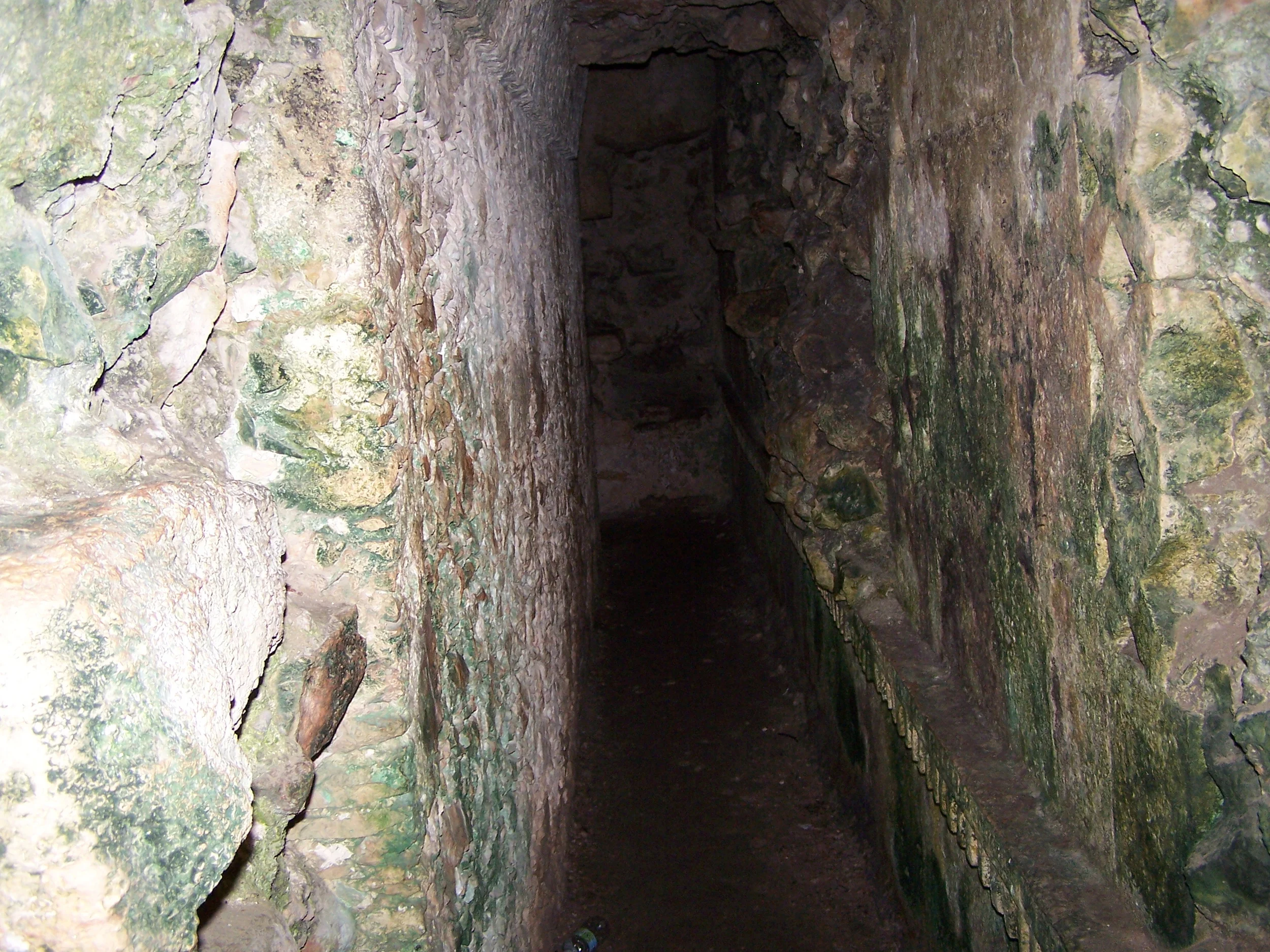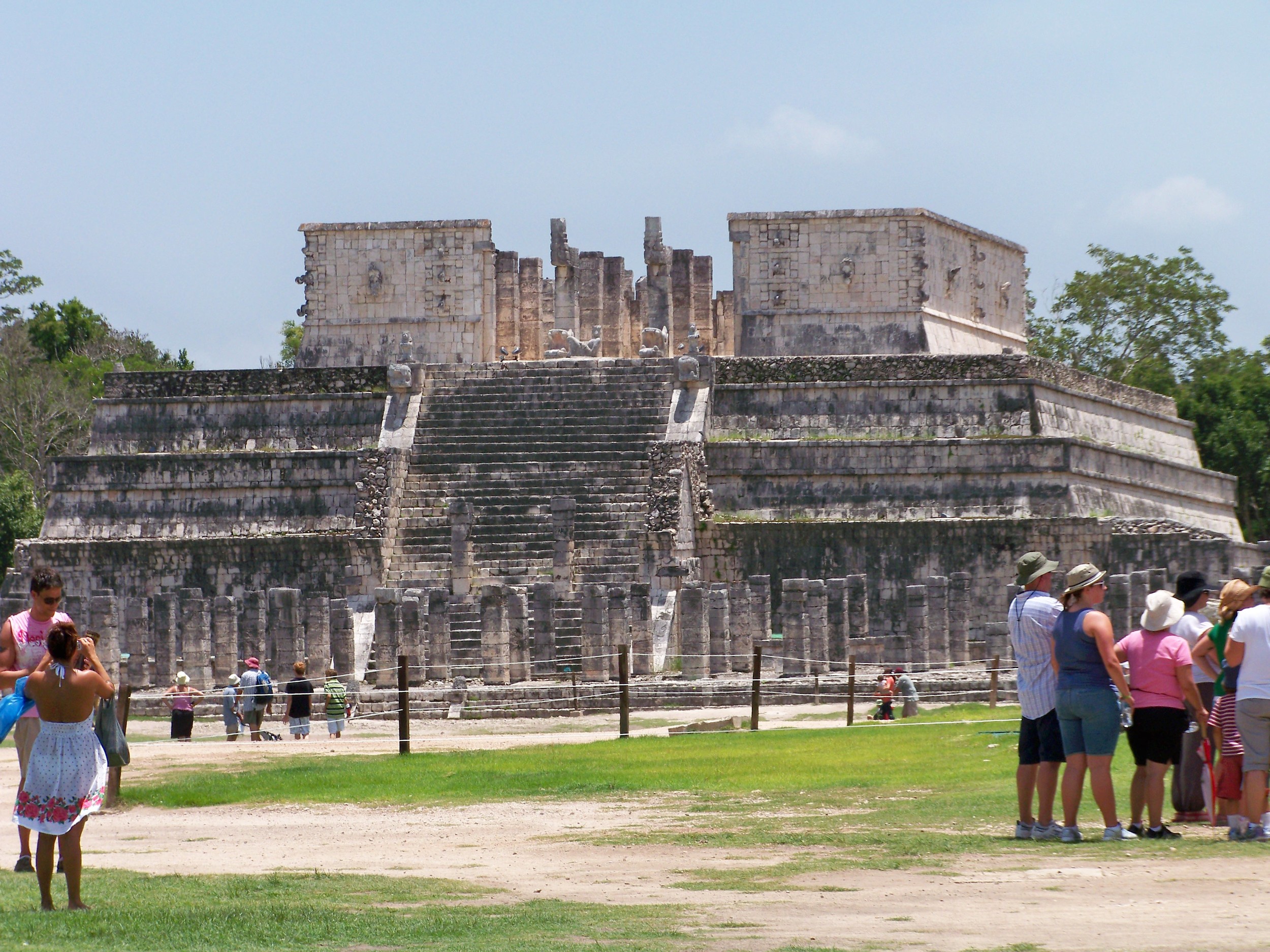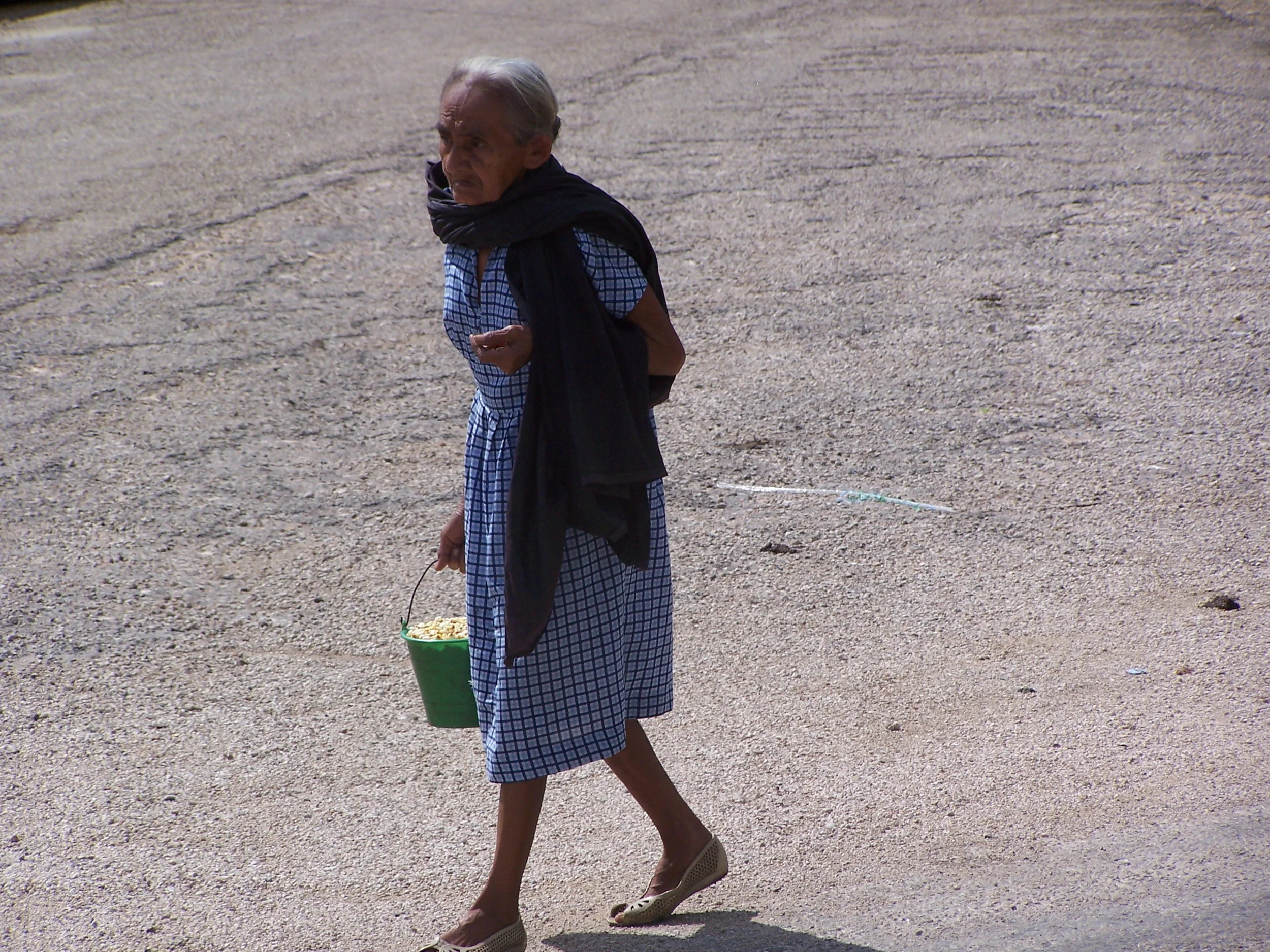One of my favorite places on this big blue marble is Cancun, Mexico. I have had a lot of adventures on the Yucatan peninsula. I like to learn about the history and cultures of places I visit and the Yucatan has some great Mayan ruins to explore. I have been to three different sites and I will eventually get them all written up for you, but today I will tell you about Chichen Itza. The name means "Well of the Itza's" when translated. The city was named after a nearby cenote', which is kind of like a natural sinkhole. I have actually gone scuba diving in a cenote' before and I will tell you more about the geological formations when I write that one up.
Chichen Itza is considered one of the seven wonders of the world.The most iconic thing in Chichen Itza is the four sided pyramid in the middle of the city. We have all seen it in our history books growing up.
Temple in Chichen Itza
We booked our trip through our resort, Moon Palace. We had an all inclusive package so this tour didn't cost anything extra. A bus arrives around 7:00 AM and we load up. After hitting a couple more hotels to pick up a few more people we are on our way. Now, some people immediately start thinking about the buses you see in the movies with the guy holding a chicken coop next to you. That is not the case. These are the nice buses with TVs and reclining seats. After we have everybody on board the tour guide starts to tell us about the Mayan culture, their calendar, and their number system. They say it in english and spanish so don't worry if you don't speak spanish.
This bus ride is about three hours long so learning about the Mayans on the way actually helps the time pass by quicker. After about 2 hours on the road we pull into this little Mayan market. They offer all kinds of stuff, but some of the more popular items are getting significant dates hand painted on leather in the Mayan numbering symbols. I am pretty sure that is mostly what is handmade there, but I could be wrong. These markets are clearly put together for the buses to stop at and to help the rural areas have a piece of the tourism industry.
When you get in the market there are not really price tags. There are codes for the people that work there. Occasionally, you will see something marked with a very low price, but they will tell you that is in "Mayan dollars" which is not a real thing. That's when the negotiation starts. Don't feel weird about it, this is how you do it in Mexico. Most of the time you can expect to pay 50%-60% of their asking price. You will actually make them feel like they took advantage of you if you just pay asking price. The prices are set intentionally high so you can negotiate with them. Just relax and enjoy the process! After a bathroom break and a quick shopping trip we are back on the bus and heading to Chichen Itza.
You can think of Chichen Itza as a state park of sorts. Our guide shows us around some of the ruins, but it is simply too big to see it all in one trip.
Observatory
Chichen Itza is in the middle of the jungle. I have only been there in the summer and let me tell you, hot does not begin to describe how you will feel. You are away from the sea breeze with 100% humidity and usually temperatures above 90 degrees. There are a few things you need to bring with you to help you have a good time.
- Hat with brim for sun protection - Even if this is normally not your style, trust me.
- Sunscreen - Pretty obvious
- Backpack - To carry all your stuff easily
- Camera - The best one you can get. Great photo ops!
- The biggest water bottle you are willing to carry - I usually carry a 1 liter bottle.
- Cheap plastic poncho - You are in a jungle. You will likely have a few minutes of rain.
- Performance clothing - Think UnderArmour Heat gear or similar. Cool lightweight fabrics with SPF would be ideal.
- Comfortable tennis shoes - tons of walking on uneven paths
I was fortunate enough to go to Chichen Itza when you could still climb to the top of the temple, but they do not allow that any more. You can still see what it looks like with my pictures though!
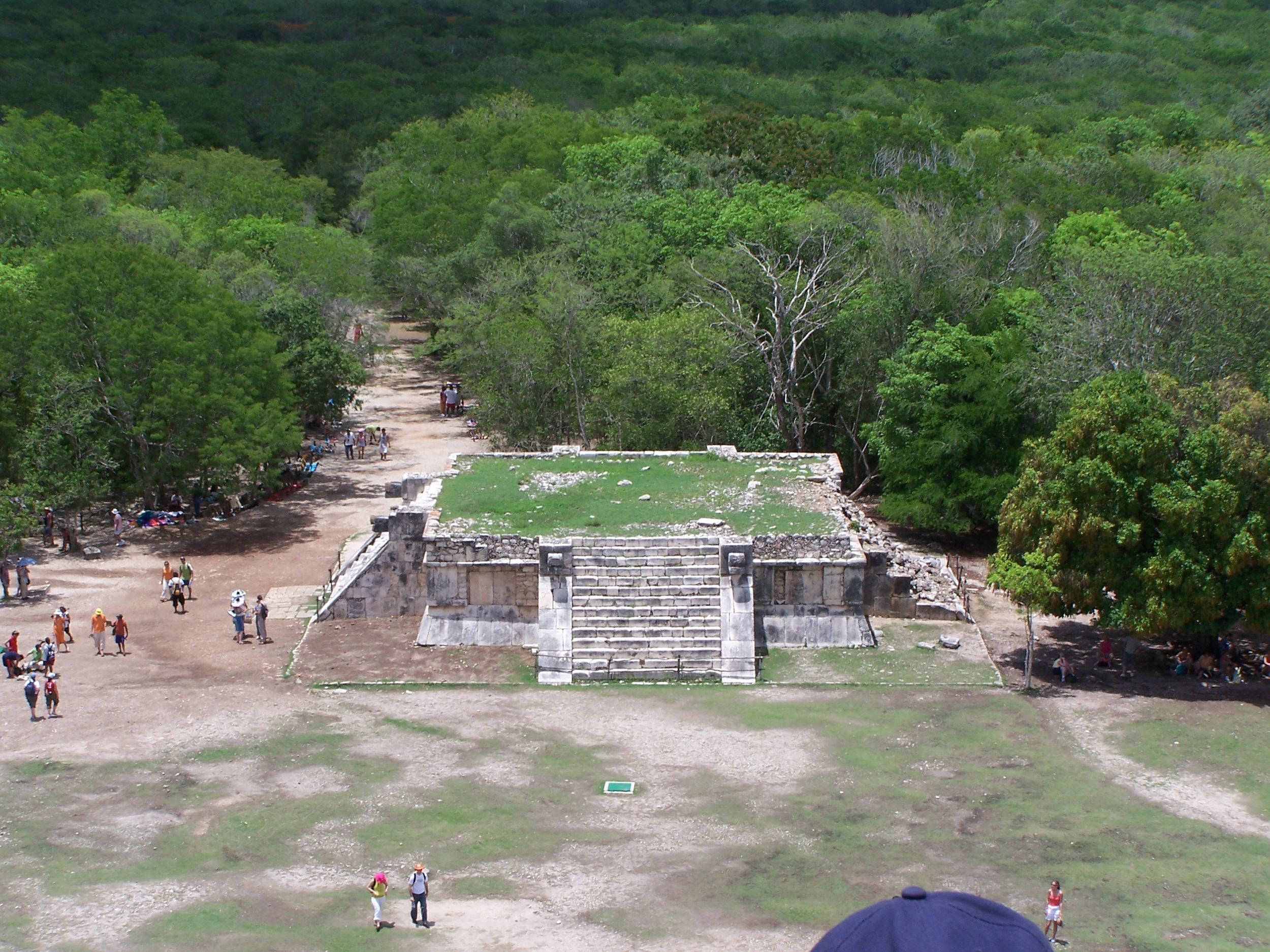
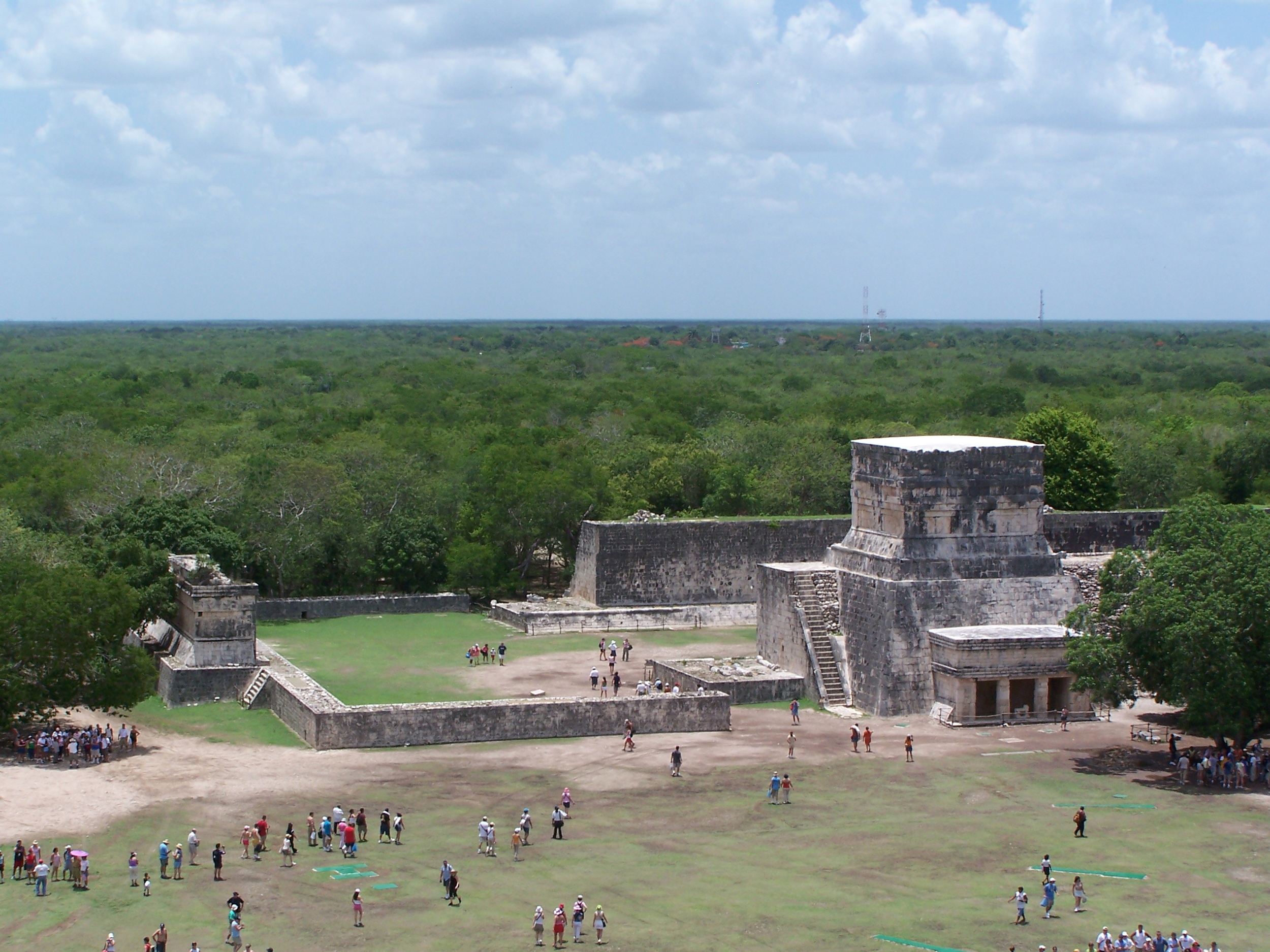
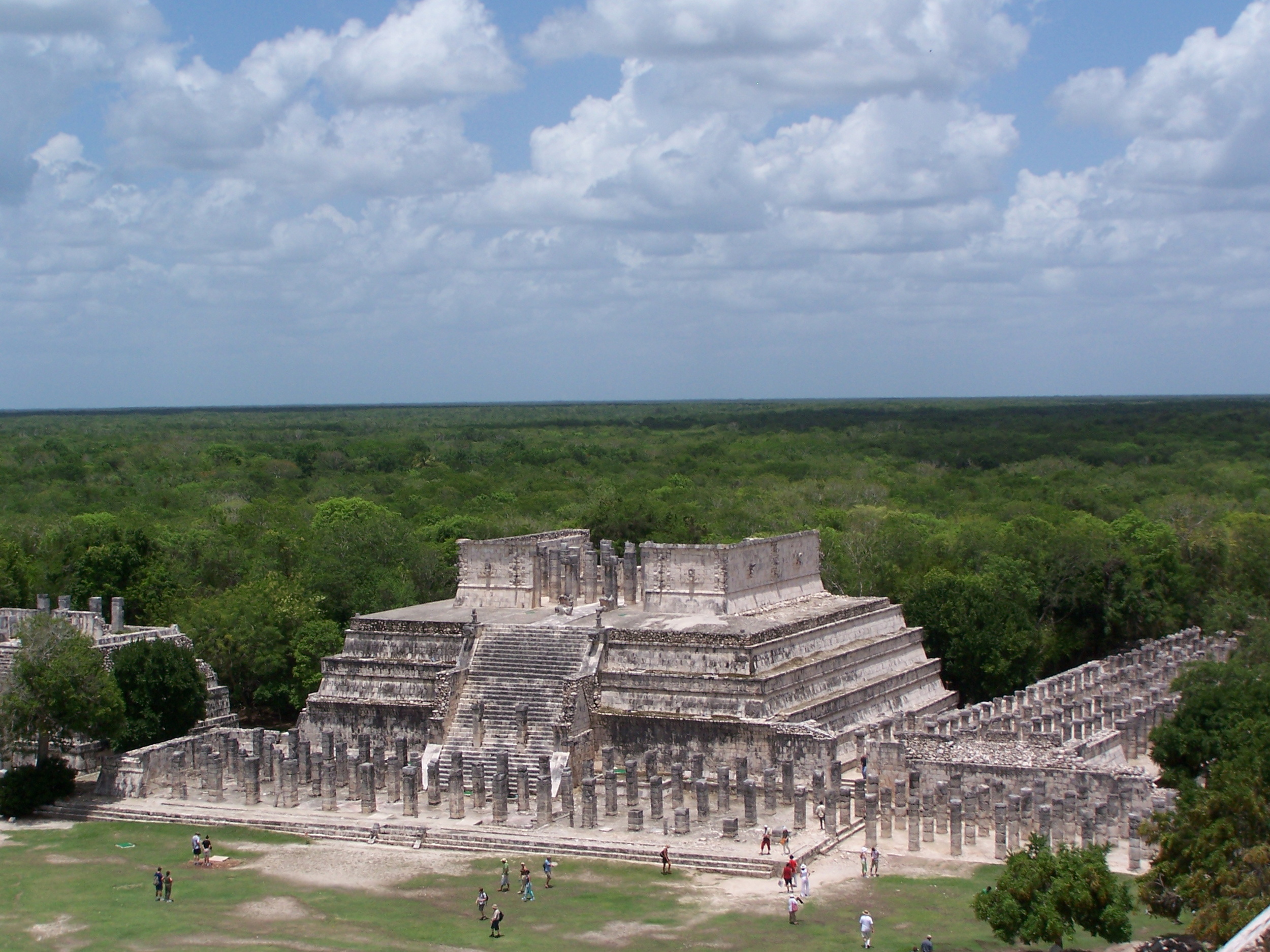

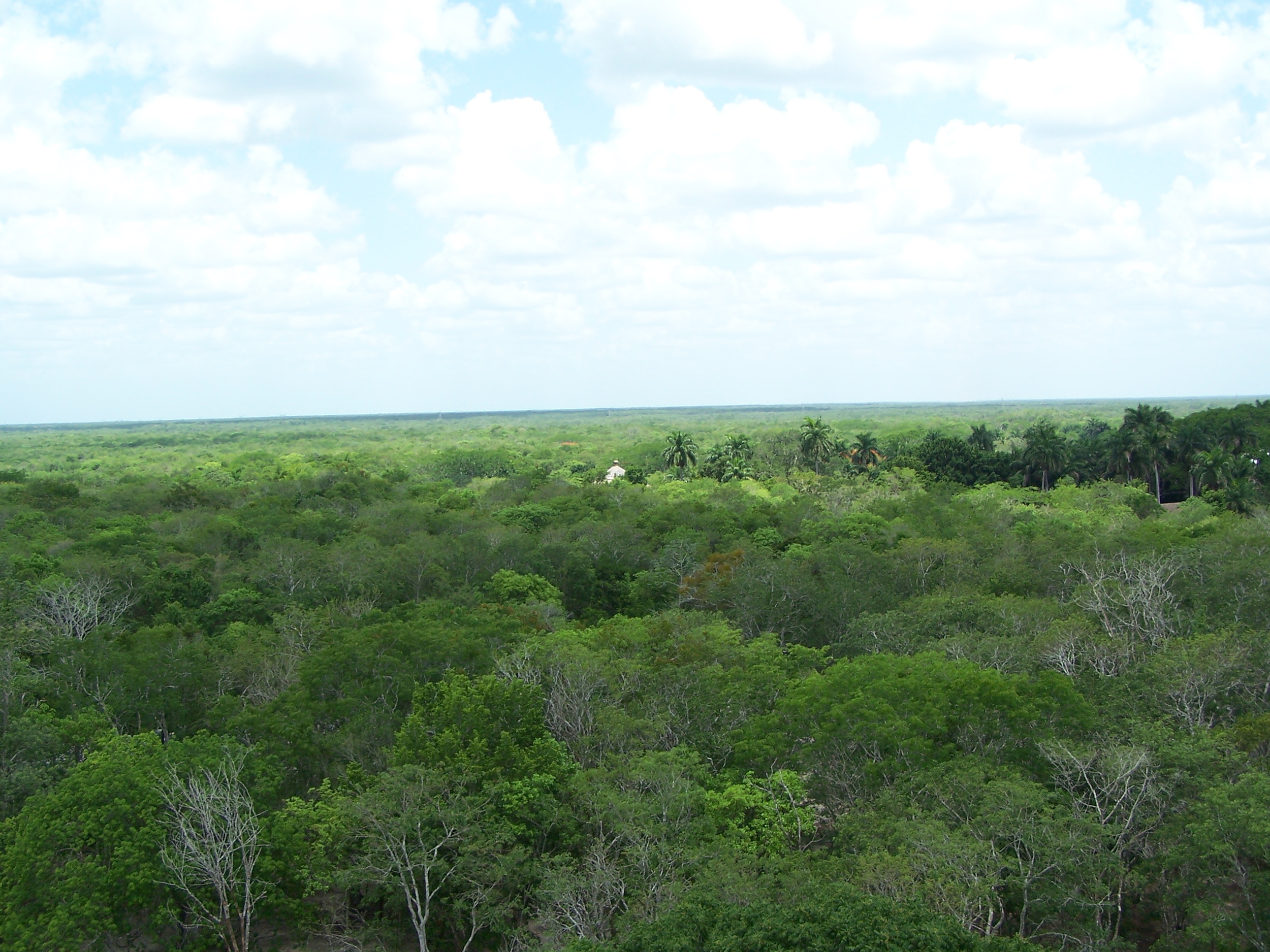
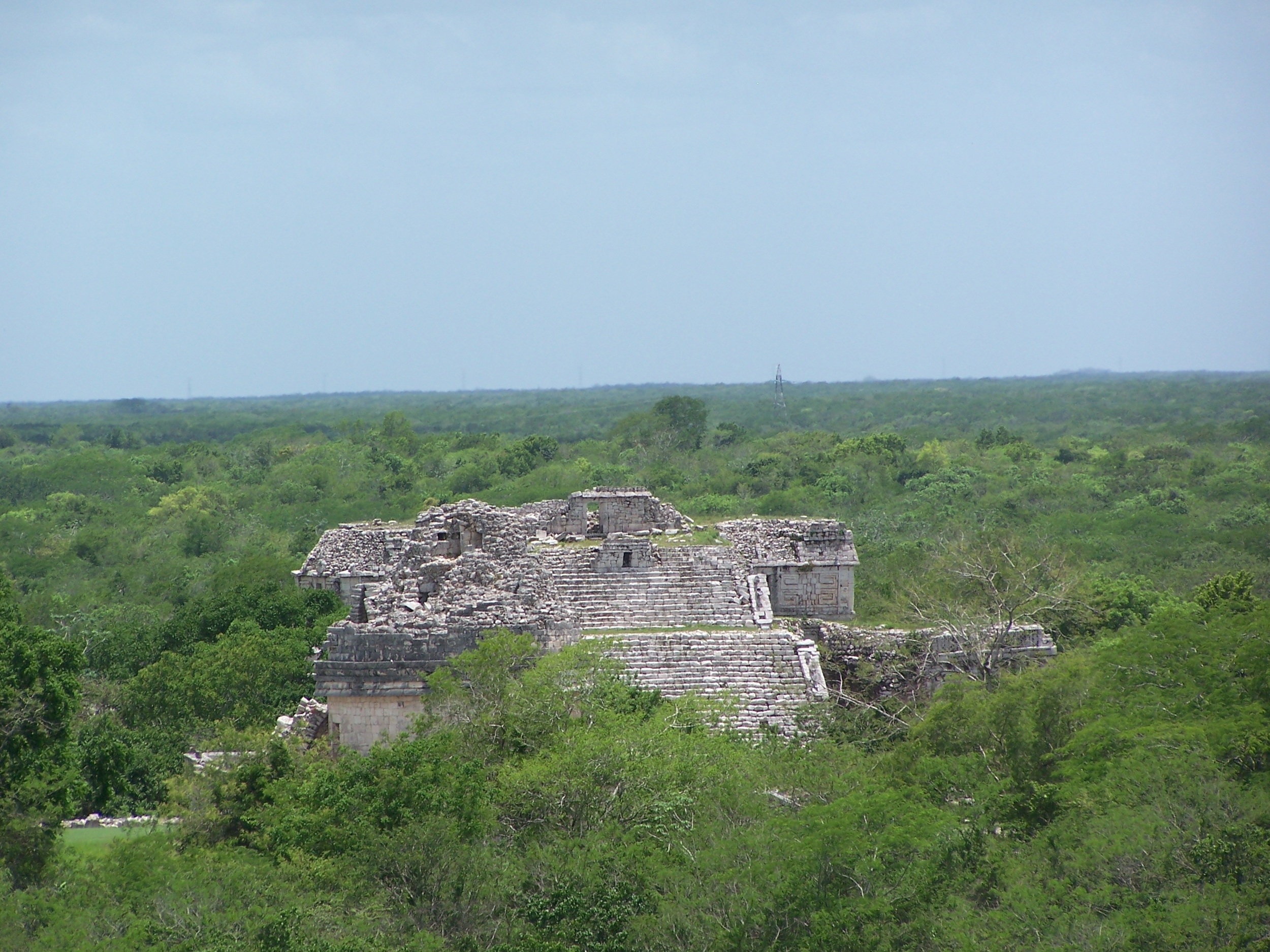
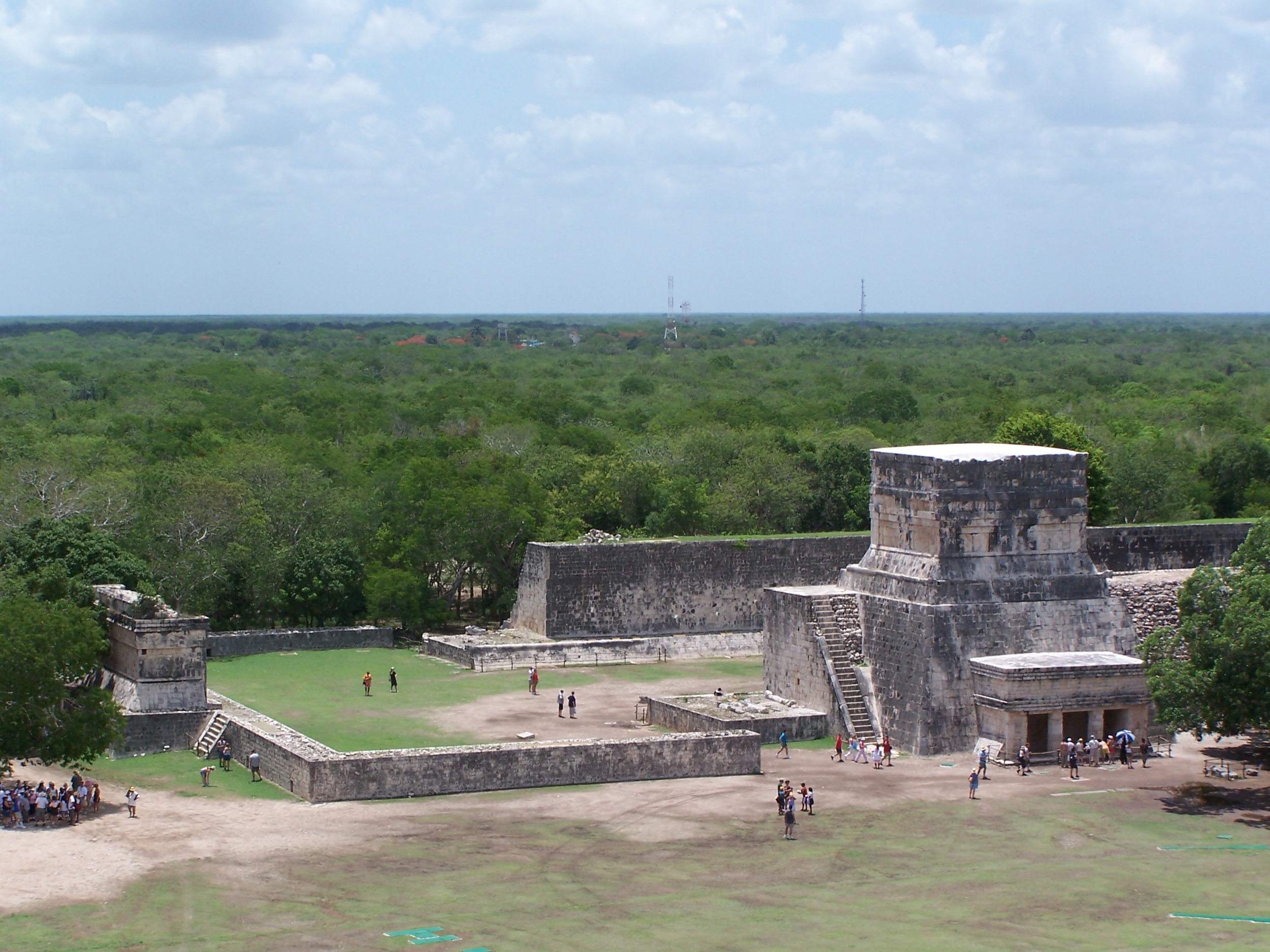
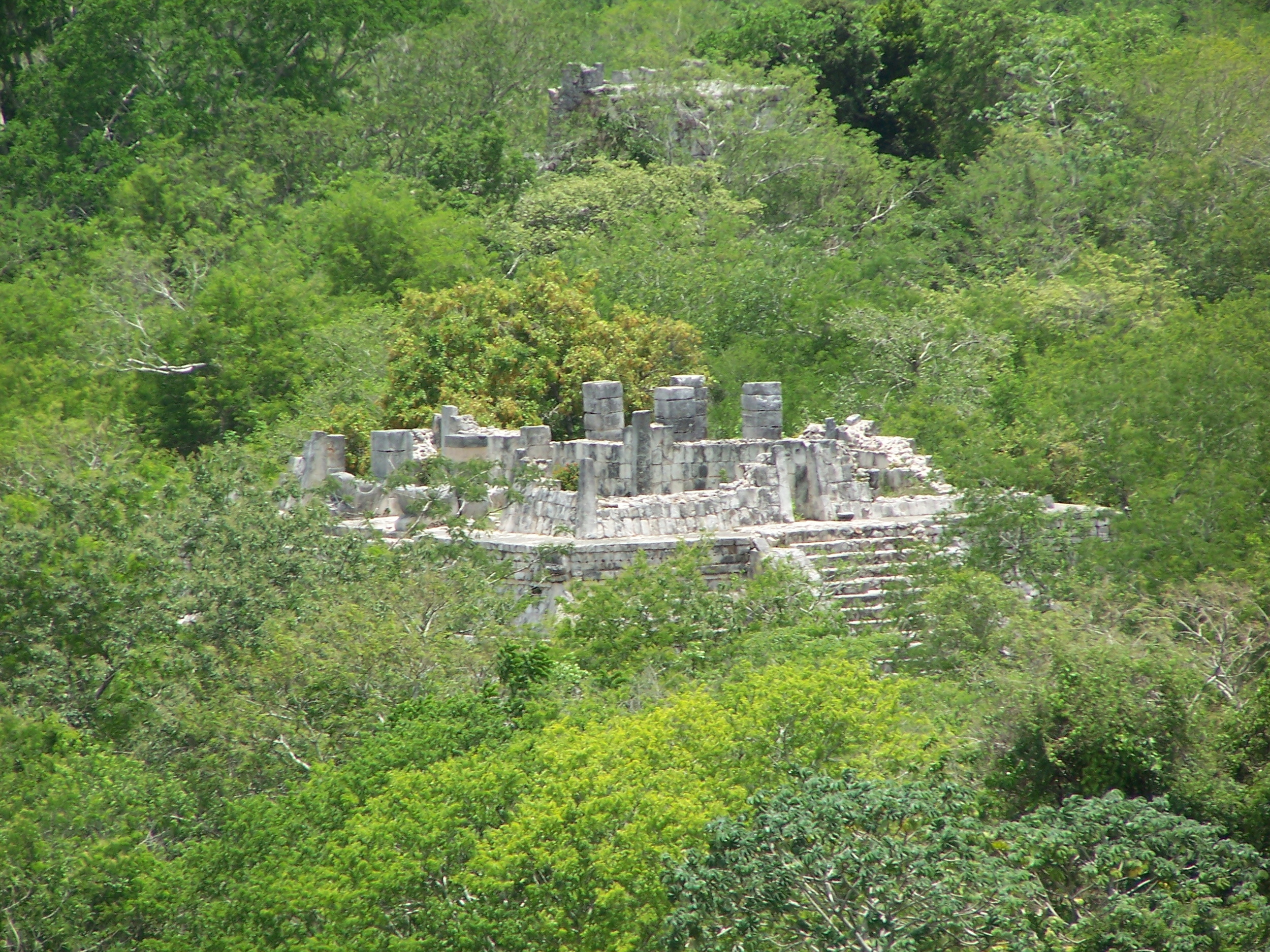
One of the main gods the Mayans worshipped is Kukulkan, which is the god depicted as a serpent.The Mayans were also masters of astronomy and time. They incorporated the head of the serpent into their temple at the bottom of the stairs. When the spring and fall equinox takes place the shadows of the steps give the illusion that the serpent is coming down the temple to Earth. Fascinating!
Serpent head
They also understood the cycle of water and it is depicted in the icons of their god named Chaac. His nose is representative of the clouds, then rain, then evaporation, back to clouds.
Look at the corners to see the nose of Chaac
I could go on and on about this site, but here's a few more quick tidbits.
If you were able to climb to the top of the temple you could see that the four sided box on top is hollow on three sides. If you stand on the solid side and speak in a normal voice you can be heard at the bottom on all four sides!
Inside the box on top of the temple
In the war ball arena there were special seats on each end. One end was for the ruling government officials and the other end was for the high priest. These seating areas are about 100 yards apart and separated by a war ball arena. During a game you can imagine the cheering and noise going on, but you can speak in a normal voice and be heard on the other end of the field!
The Mayans were also masters of acoustics. The Yucatan peninsula is full of limestone and limestone has some great acoustical characteristics. The Mayans figured out how to exploit that to their advantage.
War ball arena behind Shannon. The seating areas are still outside the picture.
View of Arena from the top of the temple.
The nearby cenote' has a small house built over it. The Mayans made human sacrifices to their gods and one of the methods used this little house. When they were making sacrifices to the rain god, Chaac, they would have people drink this special tea. This tea would cause diabetics to seizure and they believed that the gods had chosen that person to be sacrificed. If the seizures started they were tossed into the cenote' from that little house. They believed that the soul would evaporate out of that cenote' and up to the rain god.
The little house at the cenote'
The Mayans would also sacrifice people by removing their hearts and offering it up to the gods. All these human sacrifice requirements is why they did their best to take prisoners during war. If they were running short on prisoners, they had to pick from their own people. You can see an interpretation of this act in Mel Gibson's movie, Apocolypto.
At the top of the stairs in the middle you can see the place the hearts were laid.
The tour guide said that Chichen Itza was the size of Manhattan, with running water and city fountains during its peak. From the top of the temple you can see small hills in the jungle. All of these hills are unrestored ruins!
After seeing as much of Chichen Itza as we possibly could we loaded back up on the bus to enjoy some air conditioning and a nice place to sit. About half way back to the hotel we stopped at an open air buffet restaurant featuring traditional Mexican food. The best is the homemade soft corn tortillas with the barbacoa or roast pork!
After lunch the bus ride back to the hotel is pretty peaceful. Everybody has a full belly and we are all fully exhausted.
What I Learned:
- The Mayans were far more sophisticated than I knew before exploring Chichen Itza.
- Mayans are still around. The Spanish did not kill them all. They just moved out of their cities and they are still there today.
Spirit Strike:
Hebrews 13:5 NIV "Keep your lives free from the love of money and be content with what you have, for he has said, I will never leave you nor forsake you."
While this is not directly related to Chichen Itza it is something that hit me while riding through the little towns on the way to Chichen Itza.
These people are lucky to have an old pallet to build a house out of. They have rain barrels for water and they have to work everyday just to eat. When contrasting this to the typical American lifestyle it is apparent that we have so many riches and blessings that get taken for granted. These people may not have much, but as you can see they are happy. They don't have a flat screen TV with all the sports channels and they are smiling. They don't have fancy cars or nice suits and they still have everything they need to be happy. We all need to pay more attention to the blessings we take for granted. How much simpler would life be if we were not constantly pursuing stuff? How much happier would we be if we took more time to appreciate the blessings God has given us?
More Mexico Adventure: Snorkeling With Whale Sharks






